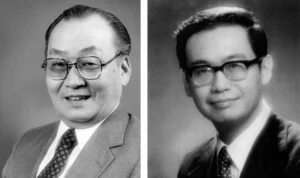Introduction
Apple’s iPhone processors have undergone significant evolution since the first iPhone was launched in 2007.
A pivotal moment in this journey was the transition from Samsung to TSMC as the primary manufacturer.
This change has had a profound impact on the performance and efficiency of iPhone processors.
Let’s delve into the details of this fascinating journey.
Follow us on Linkedin for everything around Semiconductors & AI
Early iPhones (2007-2013): The Samsung Era
The early years of the iPhone were marked by Apple’s reliance on Samsung for its processors. Up until the iPhone 5s, Samsung was the primary manufacturer of the custom System on a Chip (SoC) processors used in iPhones.
These processors, although not branded with specific names, were known by their model numbers.
Processors: These early SoCs were built on larger process nodes, such as 65nm and 32nm. The larger node sizes meant bigger transistors, which impacted the efficiency and performance of the processors.
Technical Specialties:Samsung’s processors for early iPhones featured a combination of ARM cores and PowerVR GPUs. These components met the initial requirements of the iPhone but faced challenges. Smartphone demands grew for greater power and efficiency.
Process Nodes: Samsung used a variety of process nodes,During this period, starting with larger 65nm and 45nm technologies for early iPhones. They gradually moved to more advanced nodes like 32nm for the iPhone 5 and its variants.
Transistor Types: The early iPhone processors likely used traditional planar transistors. They are less efficient compared to later FinFET (Fin Field-Effect Transistor) technology. FinFET technology offers improved performance and energy efficiency by controlling current flow over three-dimensional fins instead of a flat surface.
Performance: While competitive at the time, Samsung’s processors faced increasing pressure to keep pace with Moore’s Law (doubling of transistors every two years) as process nodes became smaller.
Shifting Gears (2014): Dual Sourcing and TSMC Entry
The year 2014 marked the beginning of a new era for Apple’s iPhone processors with the introduction of the A8 chip. This was a significant shift in strategy for Apple as it began to diversify its manufacturing.
A8 and A8X (2014): The A8 chip represented a milestone in Apple’s processor design. For the first time, Apple used a dual-sourcing strategy, employing both Samsung and TSMC to manufacture the A8 on a 20nm process. Apple likely drove this diversification to mitigate risk and leverage the strengths of both manufacturers.
Read More: 7 Exciting Technology Products From CES 2024 – techovedas
TSMC Takes the Lead (2014-Present)
From the A9 chip onwards, introduced with the iPhone 6s in 2015. TSMC became the primary manufacturer for Apple’s A-series processors. Several factors influenced this shift, including TSMC’s advanced manufacturing capabilities and potentially higher yields (the number of usable chips per wafer).
A8 (2014): The turning point came with the A8 chip. Both Samsung’s 20nm process and TSMC’s 20nm process were used in this generation. This likely allowed Apple to compare performance and efficiency directly before committing to a primary manufacturer.
TSMC’s Edge: TSMC’s 20nm process might have offered advantages like higher transistor density or better yields (usable chips per wafer) compared to Samsung’s offering.
Node Progression: Apple and TSMC have continuously pushed the boundaries of semiconductor technology. It is moving to smaller and more efficient process nodes. This progression includes:
- 16nm with the A9
- 10nm with the A10 Fusion
- 7nm with the A12 Bionic
- 5nm with the A14 Bionic
- 4nm with the latest A16 Bionic chip
- 3nm with the latest A17 Pro Bionic chip
Technical Advancements: TSMC’s advanced fabrication processes have allowed Apple to pack more transistors into each chip, significantly enhancing performance and efficiency. Apple’s custom CPU cores, GPUs, and Neural Engines have optimized to utilize TSMC’s cutting-edge technology.
FinFET Adoption: A significant shift came with the A10 chip (2016) manufactured on TSMC’s 16nm FinFET process. FinFET transistors offer better performance and power efficiency compared to planar transistors.
Continued Miniaturization: Apple and TSMC have consistently pushed the envelope, moving to smaller and more advanced nodes. It is like 10nm, 7nm, 5nm, and the current 4nm process in the A16 Bionic chip. Each node shrinks the size of transistors, allowing for more transistors in the same area, leading to performance and efficiency gains.
Custom Designs: It’s important to remember that Apple designs its own CPU cores, GPUs, and Neural Engines. These custom designs, combined with TSMC’s leading-edge manufacturing, have resulted in the industry-leading performance and efficiency seen in Apple’s A-series processors.pen_spark
Read More: $250 Million : Israel to Invest Millions to Build National Supercomputer – techovedas
Why Apple moved beyond Samsung to TSMC
There’s no single confirmed reason why Apple transitioned from Samsung to TSMC for its iPhone processors, but here are the likely factors that influenced the decision:
Leading-Edge Manufacturing: TSMC consistently pushed the boundaries of chip fabrication technology. As Apple prioritized performance and efficiency in its processors, TSMC’s more advanced nodes (like 16nm FinFET) became increasingly attractive compared to Samsung’s offerings.
Potential Yield Advantages: Yield rate refers to the percentage of usable chips produced per wafer. While not publicly available, some reports suggest TSMC might have offered consistently higher yields for similar process nodes, leading to better production efficiency for Apple.
Closer Collaboration: TSMC is a pure-play foundry, meaning they focus solely on chip manufacturing for other companies. This potentially allows for a closer collaboration with Apple on chip design and optimization compared to Samsung, which also competes directly with Apple in the smartphone market.
Performance and Efficiency: The shift to TSMC coincided with a significant leap in performance and efficiency for Apple’s A-series processors. This suggests TSMC’s advanced manufacturing capabilities, combined with Apple’s custom designs, yielded superior results.
It’s likely a combination of these factors that led Apple to choose TSMC. The success of this partnership has been mutually beneficial, allowing Apple to maintain leadership in mobile processor performance and TSMC to solidify its position as the world’s leading chip manufacturer.
The Impact
The transition to TSMC as the primary manufacturer has been a critical factor in the consistent performance and efficiency improvements seen in Apple’s iPhone processors. The advanced manufacturing processes of TSMC have enabled Apple to stay ahead in the highly competitive smartphone market.
- Performance: The shift has led to processors that are not only powerful but also efficient, ensuring that iPhones deliver top-notch performance without compromising on battery life.
- Innovation: With each new generation, Apple has introduced significant innovations in its processors, including better graphics performance, enhanced machine learning capabilities, and improved energy efficiency.
Conclusion
The transition of Apple’s iPhone processors from Samsung to TSMC highlights strategic partnerships in the semiconductor industry. It has improved iPhone performance and efficiency significantly. This shift has strengthened Apple’s leadership in smartphone innovation. TSMC’s ongoing advancements in semiconductor technology promise even more remarkable iPhone processor improvements in future generations.








